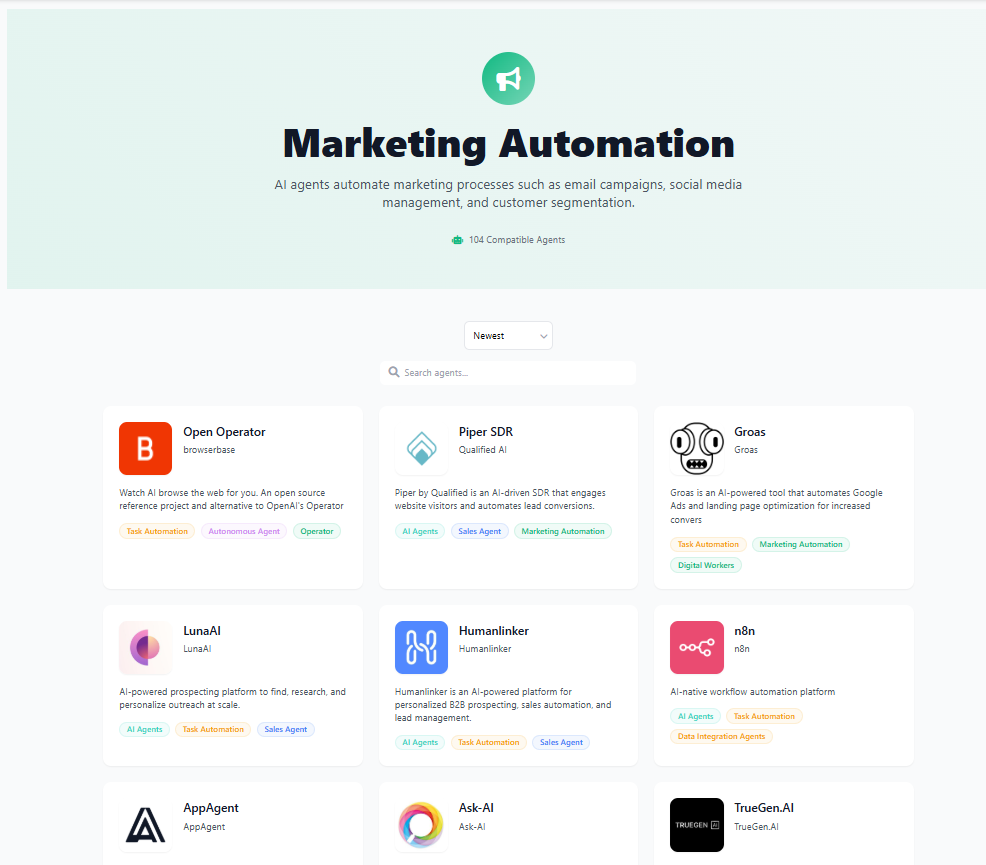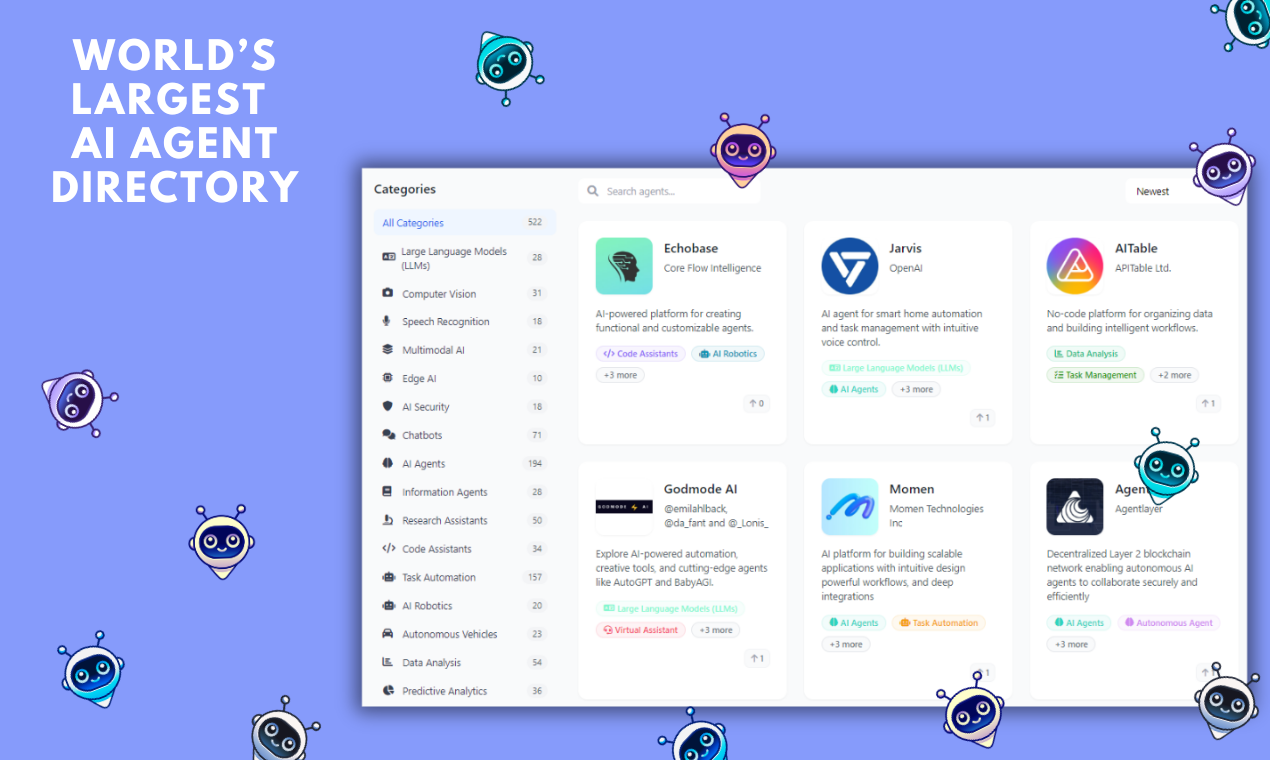How AI Agents Work

AI agents are specialized programs designed to perform tasks intelligently, often mimicking human decision-making. They are the backbone of countless applications, from personal assistants to sophisticated business workflows. This article dives into how AI agents work, focusing on the technologies and processes that make them effective.
What Makes an AI Agent?
At their core, AI agents are composed of three key components:
1. Perception: Gathering input from the environment.
2. Processing: Analyzing that input and making decisions.
3. Action: Acting based on their decisions to achieve a goal.
Unlike traditional software, AI agents adapt and learn over time, thanks to advanced algorithms.
The Building Blocks of AI Agents
1. Data Collection and Perception
AI agents start by collecting data from their environment, which could be:
Text (e.g., emails or chat messages)
Images (e.g., photos or live video feeds)
Sounds (e.g., voice commands)
Sensor readings (e.g., temperature or motion data)
Example in Action:
- A home assistant like Google Nest collects data from your voice commands and sensors, such as detecting when someone enters a room.
2. Data Processing and Understanding
After collecting data, the AI agent processes it to derive meaning. This involves:
Natural Language Processing (NLP): Helps the agent understand human language.
Computer Vision: Allows the agent to “see” and recognize objects.
Signal Processing: Interprets audio or other sensor inputs.
For example, when you ask a chatbot, “What’s the weather like today?”, the agent uses NLP to understand the question and extract relevant keywords like "weather" and "today."
---
3. Decision-Making
AI agents rely on decision-making algorithms to determine their next actions. The main approaches include:
Rule-Based Systems
Agents follow predefined rules (e.g., “If X happens, do Y”).
Example: A spam filter might delete emails with specific keywords.
Machine Learning Models
Agents analyze past data to predict outcomes or decide actions.
Example: Netflix recommends movies based on your viewing history.
Reinforcement Learning
Agents learn by trial and error, improving as they receive rewards or penalties.
Example: A robot learns to navigate a maze by being rewarded for reaching the exit.
Multi-Agent Systems
Some AI agents collaborate with others to make complex decisions.
Example: In online gaming, AI opponents coordinate strategies to challenge players.
---
4. Taking Action
Once the AI agent makes a decision, it acts to achieve its goal. Actions might include:
Sending a message
Making a purchase
Controlling a physical device, such as a robot
Example in Action:
An AI-powered inventory system might automatically reorder stock when levels are low.
---
How AI Agents Learn and Improve
AI agents improve over time through learning mechanisms:
Supervised Learning
Agents are trained on labeled data.
Example: Teaching a chatbot what responses are appropriate for specific questions.
Unsupervised Learning
Agents analyze patterns in unlabeled data to discover relationships.
Example: Grouping customers into segments based on purchasing behavior.
Reinforcement Learning
Agents learn by interacting with their environment and receiving feedback.
Example: Training a robot to pick up objects by rewarding successful attempts.
Fine-Tuning
AI agents can be fine-tuned after deployment to handle new scenarios.
Technologies Behind AI Agents
1. Machine Learning Frameworks
Frameworks like TensorFlow and PyTorch power the learning algorithms of AI agents.
2. APIs for Integration
AI agents often integrate with external systems using APIs. For instance, an e-commerce AI agent might use APIs to check inventory or process payments.
3. Cloud Computing
Cloud platforms like AWS or Google Cloud provide the computing power and storage AI agents need to process large datasets.
4. Edge Computing
For real-time decision-making, some AI agents operate on local devices rather than relying on remote servers.
Real-World Use Cases
1. Personal Assistance
AI agents like Siri or Alexa understand your commands, make decisions, and execute tasks such as setting reminders or controlling smart home devices.
2. Business Automation
Customer support agents powered by AI handle queries efficiently, learning from previous conversations to improve their responses.
3. Autonomous Vehicles
Self-driving cars are AI agents that process sensor data in real-time to navigate safely.
4. Healthcare
AI agents assist in diagnosing diseases by analyzing medical data and recommending treatments.
Challenges and Limitations
Bias: AI agents can inherit biases from their training data.
Data Privacy: Collecting and processing data raises privacy concerns.
Complexity: Some tasks are too nuanced for AI agents to handle without human intervention.
More from AI Agents
Read more articles about ai agents
Featured Agents
Discover our hand-picked selection of exceptional AI agents

Superagent
Superagent Ai
No-code platform for building and deploying custom AI agents
(5.0)

AgentGPT
Reworkd
Web-based autonomous agent platform for complex task completion and automation
(5.0)

BabyAGI
Yohei Nakajima
Task management system that uses AI to create, prioritize, and execute tasks autonomously
(5.0)

